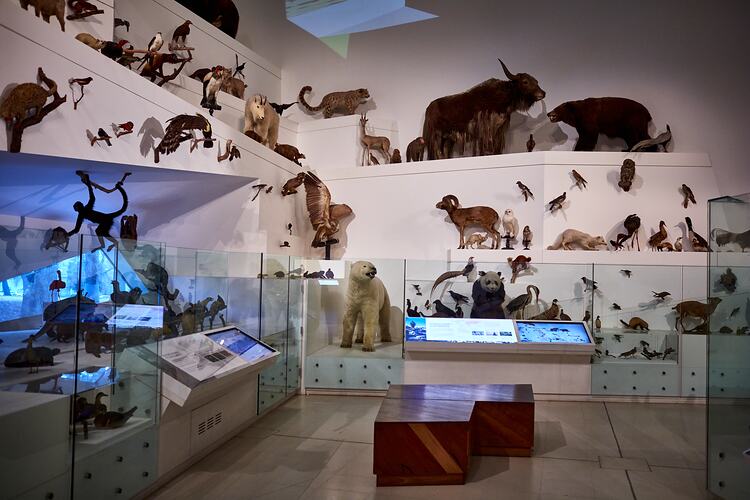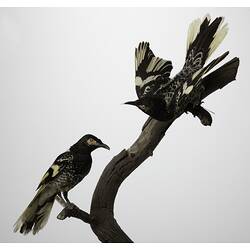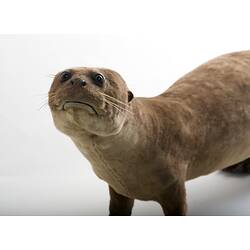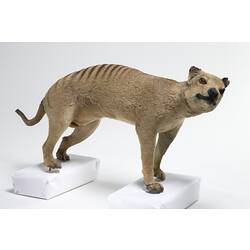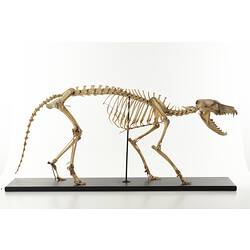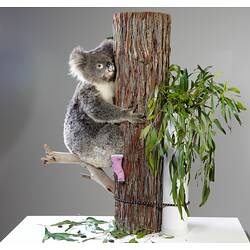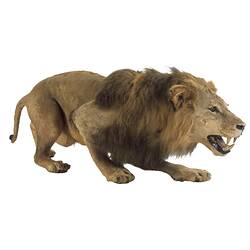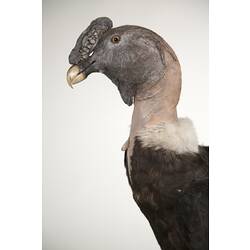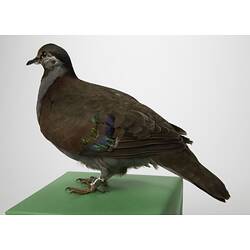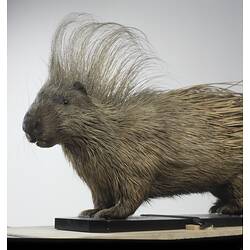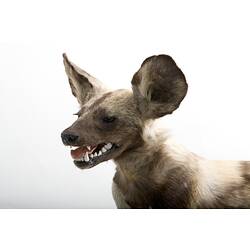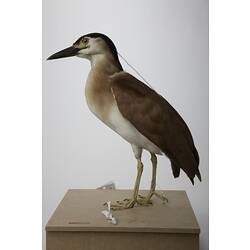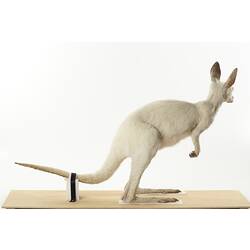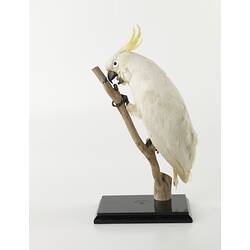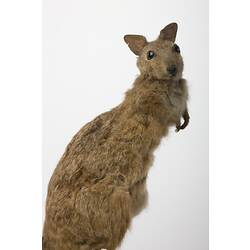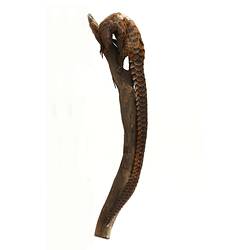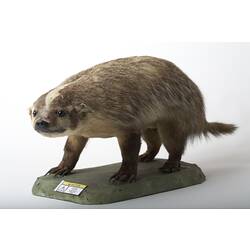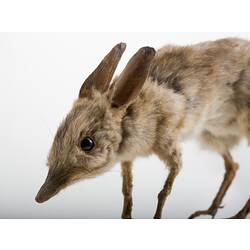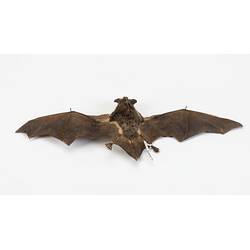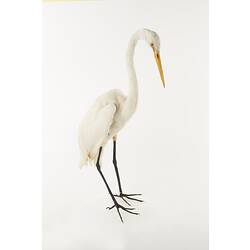In November 2009, Museums Victoria launched the exhibition Wild: Amazing animals in a changing world at Melbourne Museum. Museums Victoria and its precursor organisations have a long history of large-scale displays of taxidermy animals, many of which offered opportunities to show visitors animals they're otherwise unlikely to see in the wild. In many ways, the design of these older displays was an attempt to offer a simple exhibit rather than interpret the animals - kind of the 'static zoo' of their day. In these displays the animals were posed looking appropriately fearsome, demure or brutish, alongside a label, and many opportunities to look and point. But just as the role and messaging of zoos have changed over time, so too was it time for our taxidermy animal displays to be re-imagined.
The brief for Wild was, however, more ambitious than previous exhibitions. The intent was to use these 'old school' displays as a stepping off point to present a large-scale array of specimens (over 700 mammals, birds and reptiles) from the museum collections. The messaging in Wild leaned heavily into the value of biodiversity and conservation of endangered species - for the first time, our exhibition asked visitors to reflect on our human activity and its often negative impact on biodiversity along with marveling at it. This alone presented challenges - how can we use displays of dead things to send a message about how we should be helping keep them alive? It was challenging to present such potentially negative messages while still making the exhibition an enjoyable, wondrous experience for visitors.
Many of the specimens used in the exhibition have a long legacy with Museums Victoria, with several of having been the collections for 150 years. Some of the older specimens in the display originated from the mid 1800's, a time when ideology and attitudes towards to collection development were quite different to modern museology. We were keen to dispense with the idea of an exhibition looking like a 19th Century game hunter's trophy room, as this was at odds with the conservation message of Wild.
In museum terms, a century is quite a lifespan for a taxidermy animal. Dealing with valuable specimens of this vintage presented some challenging complexity for our conservators and preparators to resolve when delivering the exhibition. The design brief for the exhibition area was also a new approach; the plans were to minimise, and in many instances dispense with, showcases and barriers. Instead, open displays used vertical space as a means of keeping safe distance between specimens and visitors, and digital touchscreens and devices called 'panoramic navigators' connected the public with information about each animal, including conservation status. This display design choice alone added to the complexity of the installation and ongoing care of the specimens.
After nearly twelve years, tens of thousands of visitors and several exhibition awards, the time had come for the end of a very Wild ride. At the start of 2021, it was finally time for the cast of hundreds to hang up their collective hooves and talons, take their last curtain call (for now) and return to their home in the museum research collections. While the specimens take a well-earned rest from the public eye for now, their records remain and can be seen here on the museums Collections Online pages. Although the specimens have made way for the Triceratops: Fate of the Dinosaurs exhibition in the Melbourne Museum, they'll continue to be valuable research objects in our collections, and may be called on again for another public showing in the not too distant future.
More Information
-
Keywords
Museum Victoria Exhibitions, taxidermy, shows & exhibitions, animals, mammals, reptiles, birds
-
Authors
-
Article types
